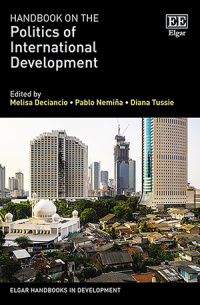
Hardback
欧洲东部的政党结构和组织
欧洲东部的政党结构和组织focuses on the origin and development of new political parties within different countries in East-Central Europe. The book has a clear focus on party structure and organization. It is one of the first books to present empirical studies of the development of political parties in Eastern Europe. Whilst making a distinctive contribution, it also feeds into the broader debate about party development and links with other issues of political theory.
More Information
备受好评
Contents
More Information
欧洲东部的政党结构和组织focuses on the origin and development of new political parties within different countries in East-Central Europe. The book has a clear focus on party structure and organization. It is one of the first books to present empirical studies of the development of political parties in Eastern Europe. Whilst making a distinctive contribution, it also feeds into the broader debate about party development and links with other issues of political theory.
The book fills a major gap in our understanding of developments within political parties and their structural evolution. It raises questions about the status and role of a modern political party – not least in East-Central Europe – and the links that can be drawn between developments within the parties and their changing position within the political system as a whole.
所有对比较党发展和东欧后共产主义变革的过程感兴趣的人都将欢迎这项充满活力的经验研究。
The book fills a major gap in our understanding of developments within political parties and their structural evolution. It raises questions about the status and role of a modern political party – not least in East-Central Europe – and the links that can be drawn between developments within the parties and their changing position within the political system as a whole.
所有对比较党发展和东欧后共产主义变革的过程感兴趣的人都将欢迎这项充满活力的经验研究。
备受好评
‘. . . this volume represents one of the best works written to date on party organizational development in east central Europe and is essential reading for all political scientists interested in party politics in postcommunist systems.’
- John T. Ishiyama,Slavonic评论
- John T. Ishiyama,Slavonic评论
Contents
Contents: 1. Introduction and Theoretical Overview (P.G. Lewis) 2. The Structure and Organization of Hungary’s Political Parties (B. Lomax) 3. Hungarian Case Studies: The Alliance of Free Democrats and the Alliance of Young Democrats (M. Balázs, Z. Enyedi) 4. Parties in the Czech Parliament: From Transformative Towards Arena Type of Legislature (P. Kopecky) 5. Party Organization and Structure at National and Local Level in the Czech Republic Since 1989 (A. Kroupa, T. Kostelecky) 6. Parliamentary and Electoral Parties in Poland (S. Gebethner) 7. Party Organization in Post-communist Bulgaria (M. Waller, G. Karasimeonov) 8. Parties in Post-communist Society – the German Case (S. Padgett) 9. Transnational Party Links and Transition to Democracy: Eastern Europe in Comparative Perspective (G. Pridham) Index




